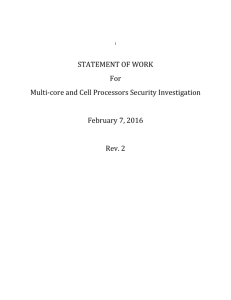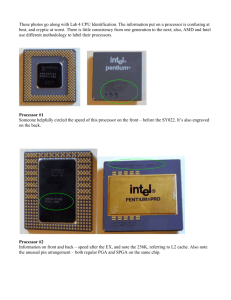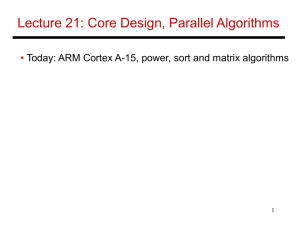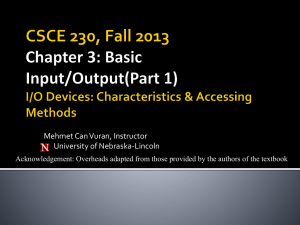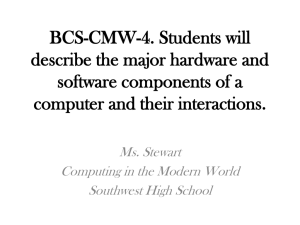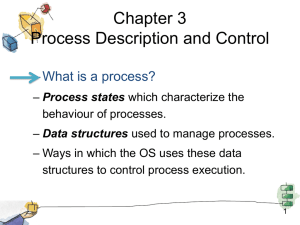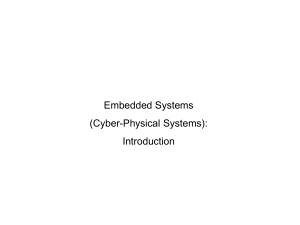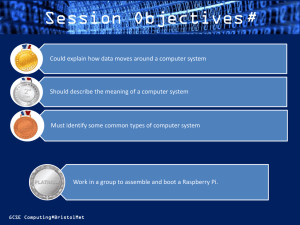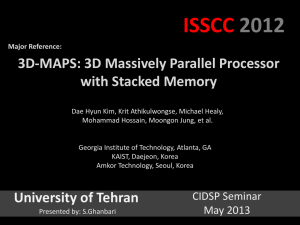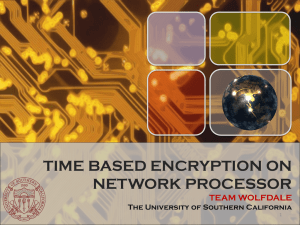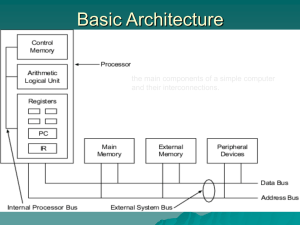The World`s First Free and OpenSource Out of Order Processor
advertisement
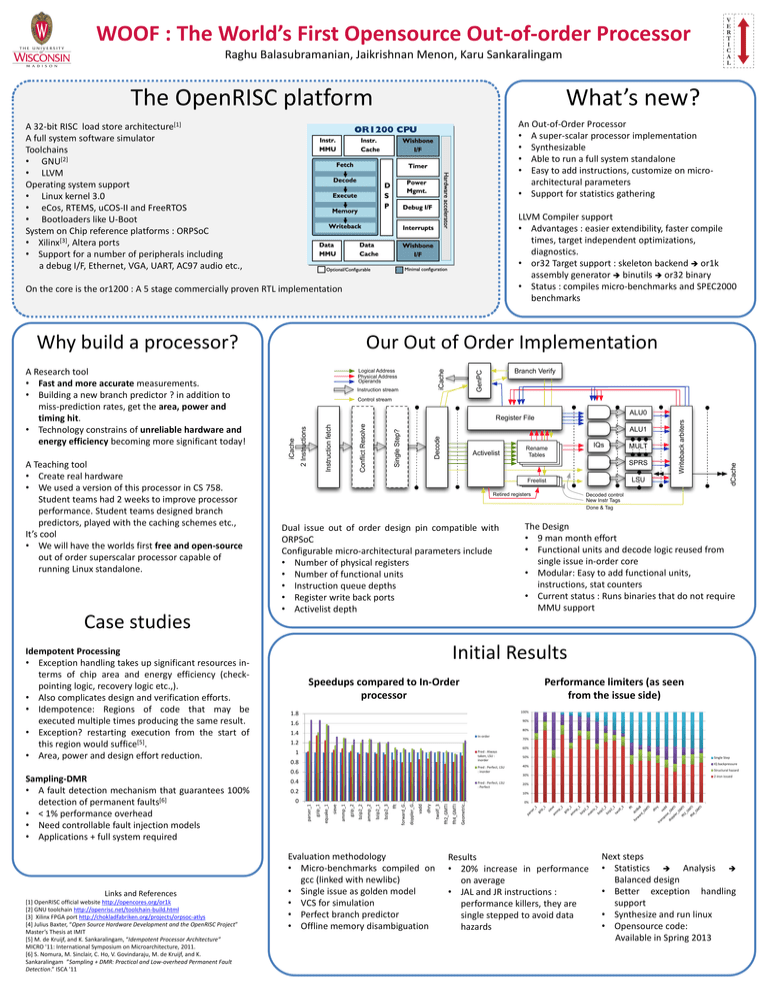
WOOF : The World’s First Opensource Out-of-order Processor Raghu Balasubramanian, Jaikrishnan Menon, Karu Sankaralingam The OpenRISC platform What’s new? An Out-of-Order Processor • A super-scalar processor implementation • Synthesizable • Able to run a full system standalone • Easy to add instructions, customize on microarchitectural parameters • Support for statistics gathering A 32-bit RISC load store architecture[1] A full system software simulator Toolchains • GNU[2] • LLVM Operating system support • Linux kernel 3.0 • eCos, RTEMS, uCOS-II and FreeRTOS • Bootloaders like U-Boot System on Chip reference platforms : ORPSoC • Xilinx[3], Altera ports • Support for a number of peripherals including a debug I/F, Ethernet, VGA, UART, AC97 audio etc., LLVM Compiler support • Advantages : easier extendibility, faster compile times, target independent optimizations, diagnostics. • or32 Target support : skeleton backend or1k assembly generator binutils or32 binary • Status : compiles micro-benchmarks and SPEC2000 benchmarks On the core is the or1200 : A 5 stage commercially proven RTL implementation Links and References [1] OpenRISC official website http://opencores.org/or1k [2] GNU toolchain http://openrisc.net/toolchain-build.html [3] Xilinx FPGA port http://chokladfabriken.org/projects/orpsoc-atlys [4] Julius Baxter, “Open Source Hardware Development and the OpenRISC Project” Master’s Thesis at IMIT [5] M. de Kruijf, and K. Sankaralingam, “Idempotent Processor Architecture” MICRO '11: International Symposium on Microarchitecture, 2011. [6] S. Nomura, M. Sinclair, C. Ho, V. Govindaraju, M. de Kruijf, and K. Sankaralingam ”Sampling + DMR: Practical and Low-overhead Permanent Fault Detection.” ISCA '11 iCache MULT SPRS Retired registers Dual issue out of order design pin compatible with ORPSoC Configurable micro-architectural parameters include • Number of physical registers • Number of functional units • Instruction queue depths • Register write back ports • Activelist depth dCache Activelist IQs Rename Tables Writeback arbiters Decode Single Step? Conflict Resolve Instruction fetch 2 Instructions ALU1 LSU Freelist Decoded control New Instr Tags Done & Tag The Design • 9 man month effort • Functional units and decode logic reused from single issue in-order core • Modular: Easy to add functional units, instructions, stat counters • Current status : Runs binaries that do not require MMU support Initial Results Speedups compared to In-Order processor Performance limiters (as seen from the issue side) 1.8 100% 1.6 90% 80% 1.4 In-order 1.2 1 0.8 Pred : Perfect, LSU : inorder 0.6 50% 40% Pred : Perfect, LSU : Perfect 0.2 Single Step IQ backpressure Structural hazard 30% 0.4 2 insn issued 20% Evaluation methodology • Micro-benchmarks compiled on gcc (linked with newlibc) • Single issue as golden model • VCS for simulation • Perfect branch predictor • Offline memory disambiguation Geometric… fft4_GMTI fft2_GMTI twolf_3 dhry vadd doppler_G… forward_G… fft bzip2_3 bzip2_1 ammp_2 bzip2_2 gzip_2 10% ammp_1 0 70% 60% Pred : Always taken, LSU : inorder sieve Sampling-DMR • A fault detection mechanism that guarantees 100% detection of permanent faults[6] • < 1% performance overhead • Need controllable fault injection models • Applications + full system required ALU0 Register File equake_1 Idempotent Processing • Exception handling takes up significant resources interms of chip area and energy efficiency (checkpointing logic, recovery logic etc.,). • Also complicates design and verification efforts. • Idempotence: Regions of code that may be executed multiple times producing the same result. • Exception? restarting execution from the start of this region would suffice[5]. • Area, power and design effort reduction. Branch Verify Control stream gzip_1 Case studies Instruction stream parser_1 A Teaching tool • Create real hardware • We used a version of this processor in CS 758. Student teams had 2 weeks to improve processor performance. Student teams designed branch predictors, played with the caching schemes etc., It’s cool • We will have the worlds first free and open-source out of order superscalar processor capable of running Linux standalone. Logical Address Physical Address Operands iCache A Research tool • Fast and more accurate measurements. • Building a new branch predictor ? in addition to miss-prediction rates, get the area, power and timing hit. • Technology constrains of unreliable hardware and energy efficiency becoming more significant today! Our Out of Order Implementation GenPC Why build a processor? 0% Results • 20% increase in performance on average • JAL and JR instructions : performance killers, they are single stepped to avoid data hazards Next steps • Statistics Analysis Balanced design • Better exception handling support • Synthesize and run linux • Opensource code: Available in Spring 2013


